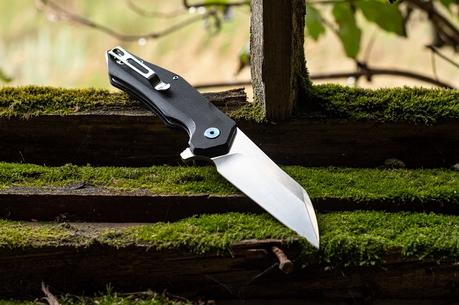
If you’re looking for a tactical tool, then gentleman knives are not for you. If, however, you’re looking for a superior-quality, aesthetically pleasing, and public-friendly looking knife that will go well with your suit or casual denim and collared-tee ensemble, then the gentleman pocket knife is for you.
While there are hundreds of reasons why you should not be carrying a knife every day, there are also far more valid arguments why you should have one safely tucked in your pocket.
Aside from these valid reasons for carrying a knife, there are also circumstances that can be easily mitigated if you carry the right knife. Say, for example, if you’re not confident that carrying an 8 inches bulky tactical blade is okay, then you can carry something smaller and a bit sleeker.
These knives are ideal for city living and for anyone who’d appreciate having a stylish and compact cutting tool. It’s a compactly designed multi-tool that offers a plethora of uses and benefits. As you know, electric fillet knives are reliable and precise. On the other hand, gentleman pocket knives, regardless of the manufacturer, are usually uncomplicated, beautifully-made, and built to last.
Since there are numerous brands and models for these knives, it’s best to get to know each type more thoroughly. Whether you’re a novice or a long-time knife collector, this guide will help you choose the best knives according to each category.
Before we do that, let’s learn more about the basics. They say you should take a kayak compass to help you stay on route. In the same vein, a tactical watch will help you survive in dangerous situations. This time, we say you need to learn more about a product so that you can come up with an informed choice.
What Is a Gentleman Pocket Knife
Compared to other objects carried in the world every day, the concept of a gentleman’s knife is quite ill-defined. Such definitions are even common within the knife industry itself. In fact, there are on-going debates within the knife community in their attempt to pin down this ill definition. And while these debates are continuing, the industry experts find some common ground to agree upon.
One of these agreed concepts about these gentleman pocket knives is that they are so portable that they can be discreetly and easily carried. Since they are easy to carry, these knives need to be in a sleek format and should be slim.
Based on these definitions, it also means these knives should not be crowded, too. Some suggest that these knives only have accessory-level significance. This is not true. These knives may be sleek and stylish looking, but they also serve a larger purpose and that is to perform certain cutting tasks.
Secondly, these knives are also uncomplicated when it comes to functionality and styling. Compared to an advanced-tactical automatic switchblade that comes with sci-fi styling, gentleman knives are way simpler. Likewise, a Swiss Army Knife, along with its iconic and classic purpose and appearance, offers way too many complications to fall into the gentleman knives category.
Though it’s not a prerequisite for a gentleman’s knife to be 100% free from any accouterments, the main point is they should be very simplistic. They should also be free from locking mechanisms and simply rely on slip joint or friction deployments.
The blades of these gentleman knives’ blades need to have some measure of timelessness in them, regardless if they’re made from rare and beautiful materials. They should also have an iconic styling made by a noteworthy designer.
As already mentioned, it’s hard to give a clear definition of what a gentleman’s knife should be since not everyone will agree and stick to one definition. Then again, the features we mentioned above are enough to help clarify and set demarcations in a slightly murky category.
Benefits of Using a Gentleman Pocket Knife
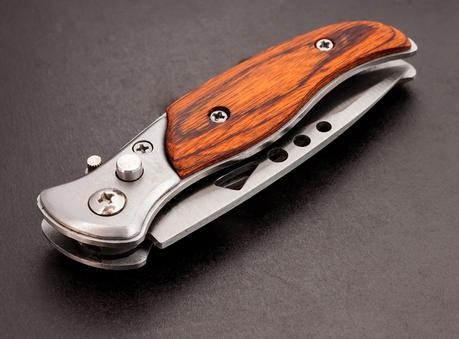
As mentioned above, a gentleman pocket knife transcends beyond being mere accessories that chic and stylish men carry with them. It has a plethora of benefits and these benefits are provided as follows:
Allows You to Survive Anywhere
A trail camera with a great range can help you survey the wild, but you need the right tool to survive it. It doesn’t matter where you find yourself stuck, you’ll have with you an all-around tool that can accomplish a lot of things. Say, for example, you’re stuck in the wilderness, a gentleman pocket knife can help you cut things or meat, set up your tent, slice your food, and even handle fires without hurting your hand.
Since they’re small, there’s no need for a large survival knife or machete. It’s also portable so you can carry it in your premium range bag. If you want to start a fire, you can create a spark by creating friction with the blade’s end and a stone.
If you want to go fishing and you don’t have any tools, you can use your knife for cutting the line the moment you catch a big fish, or if you need to remove the hook from your catch’s mouth.
Ease in Preparing and Handling Food
Some people may think that knives are dangerous, but if you don’t have any utensils, your knife can be the perfect replacement. Your pocket knife can be your spoon, fork, or knife. You can also use it to open food cans, wine or beer bottles, and anything else you need to open.
DIY Projects and Woodwork
If you’re working on your workshop projects and you don’t have any cutting tool, your pocket knife can again be the perfect proxy. It can make clean cuts and can also fit almost anywhere.
Tearing and Trimming Clothes During Emergencies
If in the middle of your dinner date or conference, somebody suffers a deep cut or breaks his limb and you need to cut through his clothes, a pocket knife can save the day. You don’t when and if these happen, but getting ready for it can come in as less strenuous preparation as carrying a gentleman’s pocket knife.
Self-Defense and Protection
Just like a medical emergency, you won’t know when they need to defend yourself or your loved one will arise. Carrying a pocket knife will help you protect yourself when such a situation arises. You can use it to threaten your opponent or cause them to harm to avoid the same harm being inflicted on yourself. When non-violence no longer works, your pocket knife will be your lifeline.
You can think of a lot of other benefits aside from these mentioned above. The point is, your pocket knife can do a lot of other things when the necessity arises, which is why carrying them around is as essential as knowing when you can use them.
How Does a Gentleman Pocket Knife Work
Though different pocket knives are used differently, the simplest and most common ones work simply – you need to open it first for the blades to show itself. If the blade of your knife is heavy enough, opening it only requires you to flick the knife up or throw it out while keeping your grip on its handle. If you need to have its detent disengaged, you can simply use your thumb accompanied by a flick on your wrist.
How to Choose the Best Gentleman Pocket Knife
Since there are plenty of pocket knife types and models out there, finding the best one might be daunting, especially for those who are starters when it comes to pocket knives. To help you choose, here are some of the important factors you need to consider:
Blade Design
There are basically twelve types of blade designs and they are the following:
Clip Point Blade
This is a common type of blade shape that’s characterized by a blade spine accompanied by a front section that looks clipped off. Its cut-out area can be concave or straight, resulting in a fine point tip that’s best for precision tasks.
Drop Point Blade
This is also one of the most common blade shapes that’s characterized by a spine that’s convex-shaped and curves from its point down to its handle. With its easily-controlled point, it’s ideal for bigger belly slicing. They are also best for hunters.
Gut Hook Blade
This blade features a small, sharpened hook-like curve that stops at its spine as the same spine slopes toward the blade point. This is typically used for wild game field dressing. Hunters also use this to cut through the animal’s skin without damaging the organ or muscle underneath it.
Talon or Hawkbill Blade
These hawkbill knives are also known as talons and they’re characterized by an edge and spine that curve down in a similar direction to mimic a downward-facing blade point.
Needlepoint Blade
This knife comes with a symmetrical blade with two tapering edges that are consistently sharp from point to handle. The said design makes the knife more effective in penetrating and piercing materials and things. Most of the knives belonging in this category are widely used for stabbing or fighting. Its narrow shape makes it a notably fragile blade type.
Straight Back Blade
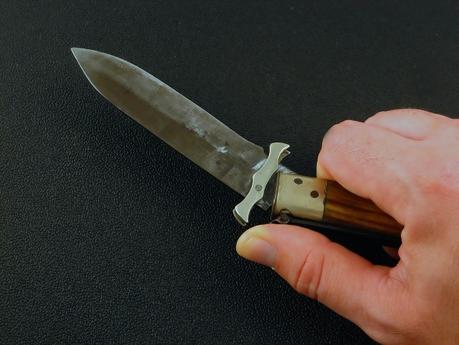
This is also known as a normal blade and it’s largely characterized by a straight spine with a curved edge that meets at the tip. Its long spine easily makes the knife blade sturdy and heavy enough for slicing and chopping.
Sheepsfoot Blade
This blade is characterized by a curvy spine that curves down and meets at the blade point. This blade also comes with a straight edge. As such, sheepsfoot is designed mainly for slicing while also limiting the potential for accidental piercing. Its name is derived from its original purpose that is trimming the sheep’s hooves.
Spearpoint Blade
This is a symmetrically-shaped blade that comes with an in-line point that aligns with the knife’s center. Its shape may be the same with a needlepoint blade, but it’s stronger and is more adept at thrusting.
Spey Point Blade
A spey point blade has a flat edge that continues until its top curves up to the knife’s point. Its spine is also mostly flat, with angles that are close to the knife’s tip, creating a point.
Tanto Blade
This type of blade is inspired by feudal Japan’s Samurai short swords. Its blade shape looks like a curved belly with an angular edge for a more prominent and stronger point.
Trailing Point Blade
Its spine tends to curve in an upward direction, elevating the point and making it higher than its handle. As such, this blade is ideal for filleting, skinning, and slicing.
Wharncliffe Blade
This is like the sheepsfoot blade with a straight-edge shape and curved spine. Its curve, however, extends slowly from its tip to handle. This is also ideal for slicing and also minimizing the risks of an accidental tip puncture.
Blade Tips
The discussion on the blade types also includes a discussion on each blade’s tip, so you can refer to the preceding section for a more detailed description of the tips of each of these common blade types.
Opening Mechanism
There are eight common pocket knife opening mechanisms and they’re discussed thoroughly below:
Thumb Stud
Pocket knives with this kind of opening mechanism are reliable and simple. They work by creating leverage on the blade, making it easy for opening with the use of one hand.
Flipper
This kind of opening mechanism is not only fun, but it also needs a smooth pocket knife pivot to work effectively. Flippers are commonly found on the knife’s opposite side. They also work by creating more leverage to the pivot, helping the knife open faster and smoother.
Nail Nick
This opening mechanism is both unassuming and traditional. This is also common among Swiss Army Knives. Nail nicks are the small grooves you can see in your knife’s blade. Though this is not the simplest opening mechanism, this, however, ensures that your knife is carefully opened.
Thumbhole
This is also another opening mechanism that’s easy to use and unique. It functions similarly like the thumb stud, only that a thumb hole allows the user to open the knife with a spidey flick or with one thumb.
Butterfly
Butterfly knives are also known as balisongs and they have two different pivot points that allow its user to open the knife by flipping it. It needs skill before one can handle the knife’s hold after opening it.
Automatic Button
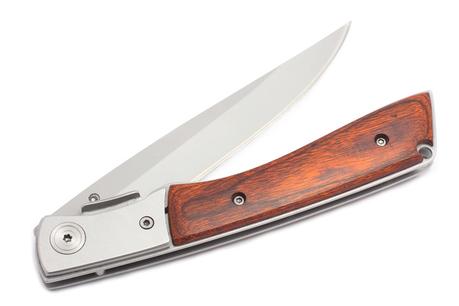
Knives having this mechanism are also called button-lock knives. As the name suggests, you open it by simply pushing the button. It usually comes with a safety lock that prevents the button from becoming activated.
Thumb Slide
Knives with this opening mechanism are easy to use and fast to operate. You only need to slide the knife up or down and the blade will open in the direction you slid it in.
Hidden Release
If you use knives with this opening mechanism, you might feel like you’re a secret agent. But, this only means that you have to be cautious in opening it as you need to slide its bolster down to one side for the blade to automatically release. In order to close it, you need to slide its switch and push its blade closed.
Blade Material
The materials used to make the blade of a pocketknife are categorized according to such factors as hardness, toughness, wear resistance, corrosion resistance, and edge retention. Currently, there are three types of blade materials and they are the following:
Tool Steel
This type of material is primarily composed of hard steel alloys that are commonly used in cutting tools. In this group, some popular steel types like O1, D2, and CPM series of Crucible are included. Aside from that, this group also includes the more advanced speed steels known as M4.
Carbon Steel
This is made for tough and rough use or in cases wherein durability and toughness are equally important. This is also more common in machetes and survival knives. Its sharp edge is easy to resharpen. The only downside is that they have lower chromium content, making them highly susceptible to corrosion.
Stainless Steel
This is carbon steel added with more chromium to make it corrosion resistant. Its superior toughness also elevates its performance levels. This is also the most popular knife category today among EDC knives and it includes Crucible’s SxxV steel series, Sandvik, MoV, CTS, VG, AUS, 154SM and 400. For steel to qualify as stainless steel, it must have 13% chromium.
Blade Size
Blade sizes for pocket knives are categorized into three different types — small, medium, and large blade sizes.
Small Blades
These blades are typically less than 2.75 inches when it comes to length, so it’s great for daily carry. They are also ideal for utility tasks like cutting strings, food, and boxes. They are not efficient for tougher cutting tasks like cutting large vegetables, fruits, tough, rough, or wood. They also don’t usually have a locking mechanism making them prone to accidental folding even while in use.
Medium Blades
These blades have a length of 2.75 to 4 inches and they’re best for wider cutting job ranges but still convenient to be carried around every day. Unlike smaller blades, medium blades have a wide array of locking and opening mechanisms that smoothly prevent the knife from voluntarily closing while still in use. Since they have larger blades, they can accomplish more strenuous tasks.
Large Blades
Anything that’s longer than 4 inches in length falls under this category. If you need to carry a knife for staying outdoors or for self-defense, this is the best knife for you. Its larger blade is intimidating and can overwhelm your opponent.
Handle Design
There are different types of handle designs and the user can have their knife handle designs personalized. For wooden handles, you can engrave your name, favorite character, logo, or any design element. The same is true for other knife handle materials.
Handle Material
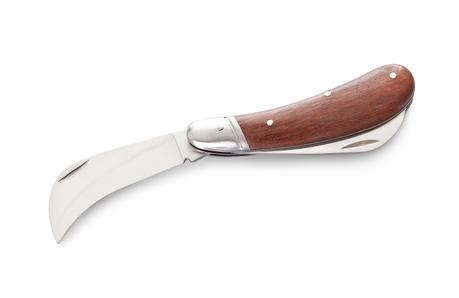
There are currently four different types of knife handle materials and they are the following:
Wood Handles
With fine quality wood, you can make an attractive and durable knife handle. This is an inexpensive material, especially if you want to make a heavy-duty knife. You can base your choice of wood on how, when, and how frequent you’ll be using your knife. Great choices include hardwood or stabilized ones wherein plastic is injected into the wood.
Metal Handles
Metal is a common knife handle material famed for its strength and durability. Basically, there are two common types of metal used and they are stainless steel and titanium. While both are corrosion-resistant, the former is heavier than the latter. The latter is highly recommended for having a better threshold in withstanding tension.
Stag Handles
These handles are made from deer antlers that were naturally shed, making them costlier and rarer. The good thing about these handles is that they have a sturdy grip because of their rough texture.
Bone Handles
These handles have been widely used since the dawn of civilization and up until now, they’re still popular within the knife collector community. Most classic pocket knives have this kind of handle. It’s inexpensive, but it’s also susceptible to cracking and more porous.
Locking Mechanism
The discussion under opening mechanisms also gives a clearer view of the different kinds of locking mechanisms among pocket knives, so kindly refer to that section for further discussion.
Belt Clip
The purpose of belt clips is to provide easy access to the knife even when the user decides to keep it away. It’s like you’ll put your gun in a shoulder holster. Currently, there are six common types of belt clips and they are the following:
Regular Belt Clips
This kind of belt clip is functional and traditional. It provides the user with easy access to the knife that’s sitting slightly higher than his pocket.
Deep Carry Belt Clips
This is ideal for those who want to conceal their knives in their pockets. With this belt clip, the knife is positioned deeper into one’s pocket, only exposing a small portion of the knife.
Shorter Version of Deep Carry Belt Clips
This is different than a deep carry one in terms of the size of the package. In this case, the belt clip is, in a way, a smaller package. Its low-profile design makes it easy to conceal the knife.
Milled Belt Clips
This kind of belt clip is less susceptible to bending. It is also often made from exciting materials, with crazy colors and wild shape. They work and function just like other clips, but they differ from them in terms of designs and shapes.
Carabiner Belt Clips
These clips are good for gears and bags. Their main function is to provide higher security levels for knives that are prone to dropping and not comfortable to be placed in one’s pockets.
Wire Belt Clips
These are low-profile belt clips that get the job done fast. If you want to keep your knife in your pocket in a very subtle way, a wire belt clip is your best bet.
How to Use a Gentleman Pocket Knife
Step 1 – Flick the knife and keep the grip
A gentleman pocket knife can be used in different ways, and the only thing that’s peculiar about its functionality is how to open it. As mentioned above, if the blade of your knife is heavy enough, opening it only requires you to flick the knife up or throw it out while keeping your grip on its handle.
Step 2 – Disengage if needed
If you need to have its detent disengaged, you can simply use your thumb accompanied by a flick on your wrist.
How to Clean and Maintain a Gentleman Pocket Knife
Cleaning and maintaining your pocket knife is not a complicated thing to do. Here are simple steps to help you fulfill these tasks.
Step 1 – Keep your knife fully-sharpened
There are countless ways to keep your knives sharp and you don’t need to be overly scientific in order to achieve a fine-edged knife. Since most knife sharpeners come with a coarse surface, you need to slowly work your way to reach the finer surfaces of the knife.
Step 2 – Remove grime from your knife
You can start removing grime by removing all the visible bits and pieces of dirt. Also, take note of the detritus you can find on every nook and cranny of your knife. Pay special attention to your knife’s handle and pivot.
Step 3 – Wash your knife with mild soap and warm water
Wash your knife thoroughly. You can also submerge your knife into your solution and make sure that it completely dries before you lubricate and store it again. Use a Q-tip, toothpick, or toothbrush to clean all the remaining dirt away.
Step 4 – Dry your knife with compressed air
Dry it like you’re drying your computer keyboard. If not, you can still use a rag to clean damp areas. Make sure to remove all moisture before you lube and store your knife.
Step 5 – Lubricate your knife
After cleaning your knife, make sure to lubricate it. If you’re using your knife to cut food, make sure to use food-safe lubricants. Use your lubricant sparingly. One or two drops of lubricant are enough to wipe down the blade and pivot with the use of a microfiber cloth.
Does More Spending Mean More Quality
No, spending more doesn’t guarantee quality. With knives, you must first identify how you’ll be using it to find the right materials and ideal blade and tip points for the job. The moment you identify where and how frequently you’ll use your knife, finding premium-quality knives at a budget-friendly price is easier.
Do’s and Don’ts With a Gentleman Pocket Knife
Here are common do’s and don’ts to help you take care of your gentleman pocket knife better.
Do’s
- Keep your knife free from dirt and grime
- Understand the types, materials used, and other features of different pocket knives before buying
- Use a hunting knife with a sharp blade is the best idea
- Know when, how, where, and how frequently will you be using your knife
- Understand the mechanisms of each type of blade
- Lubricate your knives before storing them
- Make sure to tighten bolts and screws from time to time
- Use the world’s best survival knife
- Use a device for coyote calling before you use your hunting knife
Don’ts
- Blindly buy knives because of the brand alone
- Buy without knowing how to properly use the knife
- Keep your knife away without cleaning them
- Not understand how to keep your knife safe while carrying and storing it
- Not keep your knives in a safe place not reachable by kids and minors
FAQ About Gentleman Pocket Knives
Can a pocket knife go on a plane?
Based on the travel guidelines set by the Transportation Security Administration (TSA), Swiss Army Knives, pocket knives, and other regular knives can be packed and placed inside the bags that are checked in by the passengers. They, however, cannot be brought on board the plane inside their respective carry-on luggage.
Which pocket knives are illegal?
Stilettos, switchblades, Bowie knives, balisongs, and pocket knives are legal. They can be legally carried by anyone who is over 21 years old. However, it’s illegal if you conceal your knife and you fail to inform the police that you’re carrying one. This applies even if you have a concealed-carry permit.
How to sharpen a pocket knife with a stone?
All you have to do is to lubricate your knife first. Once done, lay its blade flat on the surface and shoot for a 15 or 10-degree angle. If you’ve properly positioned your knife into the right angle, you can start sharpening it as if you’re carving off something on the stone’s surface.
How to fold a pocket knife?
Pocket knives should be opened and closed carefully to avoid any kind of injury. If you’re closing a folding knife, you need to make sure that you securely hold its blade and handle. Hold the knife’s body firmly to close the blade in an efficient manner.
When to sharpen a pocket knife?
When you’re sharpening a steel knife, the right time to sharpen it is after two to four uses. For carbon steel knives, honing should be done after every use. And if you have been honing your knives, you must remember not to sharpen it more than once every one to two years.
Conclusion
Pocket knives may be complicated to know and get the hang of, but if you’re a hobbyist or a collector, knowing these facts and trivia can make you love knives even more. If you’re a novice looking for something to spend your time on, learning about knives will offer a good use of your time. Regardless if you’re a pro or novice, you need technical know-how about these knives.
So, before you decide to purchase a pocket knife, take time to read the tips and information we shared above. Through this simple fact sheet, you’ll have more fun and easier time to look for the right pocket knife for your needs.
Photos from: vzwer / depositphotos.com, eevl / depositphotos.com, 9albin / depositphotos.com, Pshenichka / depositphotos.com and AndreyPopov / depositphotos.com.

